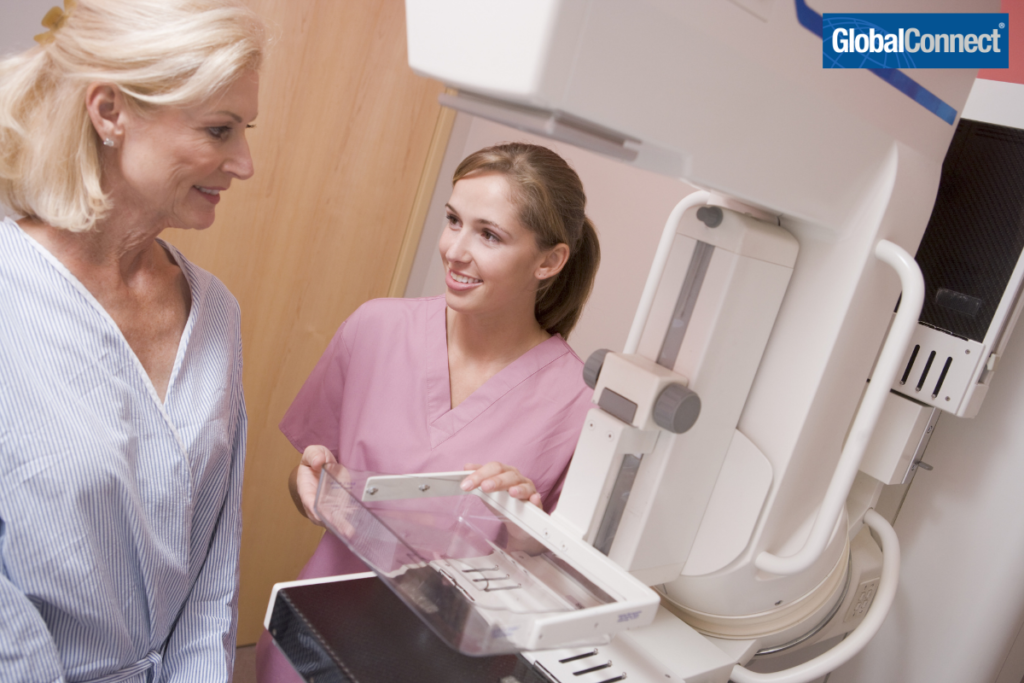October is Breast Cancer Awareness Month, an annual health campaign to increase awareness of the impact of the disease and to educate women on prevention, early detection, and treatment options.
Breast cancer is one of the few cancers that has an effective and proven screening test. Through mammography, a painless X-ray of the breast, early changes to breast tissue can be detected. Mammography and regular breast self-examinations are the key tools in the early diagnosis of breast cancer that are currently available.
Scientists continue research to discover new ways to enhance and improve current breast cancer screening options. Advances in technology with better imaging are creating improvements in both screening and early detection of breast cancer.
3-D Mammography
One of the newest technologies that is currently being offered to some patients is 3-D mammography. Also called “breast tomosynthesis,” this procedure captures high-resolution images of the breast from different angles and puts them together in a 3-D-like picture.
A 3-D mammogram machine creates both 3-D images and standard 2-D mammogram images. Studies have shown that combining 3-D mammograms with standard mammograms reduces the need for additional imaging and is effective at detecting a slightly higher number of cancers.
The 3-D mammograms are now being recommended for women with dense breast tissue, since dense breast tissue (which has more ligaments and glands than fat tissue) can often make imaging more challenging.
With advanced 3-D imaging, radiologists can get a more accurate image in women with dense tissue—offering a greater chance to catch any breast changes or suspicious spots that may have been obscured with a standard mammogram.
On regular mammograms, problem areas can appear as white spots and can sometimes block the view of tumors, which can be disguised as white spots. Small, early tumors can be hidden in dense areas of the breasts. Radiologists can get a better idea of what these spots really are by looking above and below the spots with 3-D imagery. This can offer women a greater peace of mind knowing that early breast changes weren’t missed.
Women who have dense breast tissue will be notified by their doctors after a routine mammogram that they’re considered to have dense tissue, and they are usually given the choice to have future screenings by 3-D mammogram, or a screening ultrasound for those at higher risk, such as a strong family history of breast cancer.
Studies have found that 3-D mammography lowers the risk of a woman being called back for follow-up testing, which often causes unnecessary stress and anxiety. It also seems to be better at finding more breast cancers, especially in those women with dense breast tissue. According to the American Cancer Society, there is a large study now underway to compare the outcomes between 3-D mammograms and traditional mammograms.
Ultrasound
Breast ultrasound is usually used when certain breast changes are first found on a mammogram, or it may be recommended to women with a higher risk of breast cancer, such as those with a family history or past breast cancer diagnosis.
Ultrasound is very effective at determining the difference between fluid-filled cysts (more likely to be benign) and solid masses, which may need further testing to rule out cancer. Ultrasound is also used when a woman needs to undergo a breast biopsy to help guide the needle into the suspicious area so cells can be removed and tested for cancer. Ultrasound is easily accessible, non-invasive, and does not expose a woman to radiation.
MRI
Breast MRI (magnetic resonance imaging) uses radio waves and strong magnets to make detailed pictures of the inside of the breast. MRI as a screening test on its own is not usually recommended as it can sometimes miss cancers that a mammogram would find, but it may be recommended for some women at high risk for breast cancer as an accompaniment to an annual mammogram. MRI is often used in women who already have been diagnosed with breast cancer to help measure the size of a tumor and to look for additional tumors.
New technology
Several other screening tests are currently being studied to see if they are as good as or better than mammography. These include molecular breast imaging, positron emission mammography (similar to a PET scan), contrast-enhanced mammography, optical imaging tests, electrical impedance imaging, and elastography.
